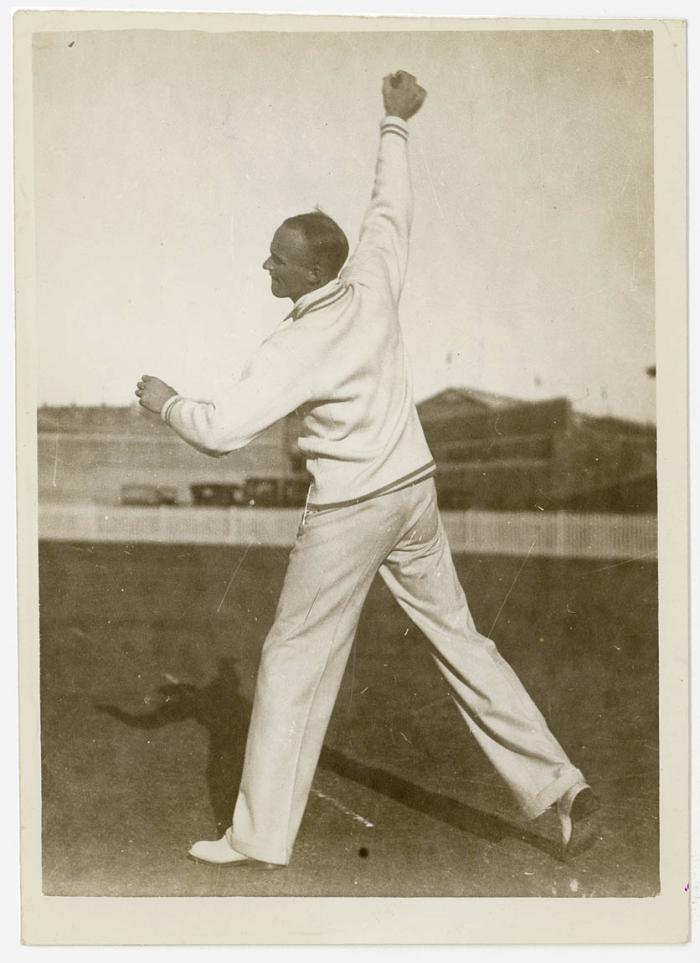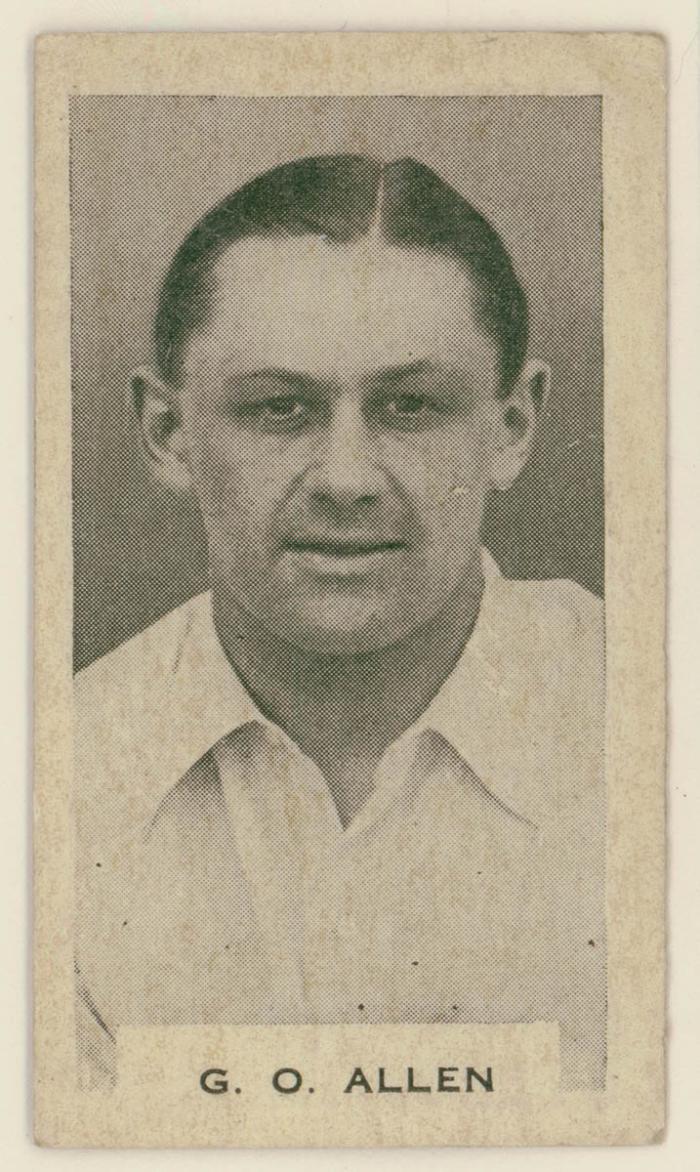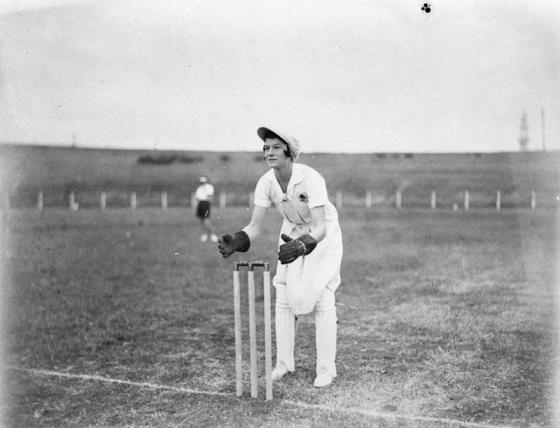In an attempt to contain his devastating batting, the English introduced 'bodyline' bowling, delivering a style of attack for the Australian batsmen that changed the nature of cricket.
Bodyline was an aggressive fast bowling style targeting the batsman's body rather than the wicket. Batsmen of the day wore little protection by modern standards. With a packed leg-side field waiting for a catch, there was little even the great Bradman could do but move out of the way as fast as possible.
While the bodyline tactic succeeded in curtailing Australia's run rate, it caused much controversy. During the 3rd test at Adelaide, Australian captain Bill Woodfull, was struck down by a ball to the chest and the team wicketkeeper, Bert Oldfield, suffered a fractured skull.
The new tactic even split the English side. The fast bowler George 'Gubby' Allen refused to bowl bodyline despite the urgings of his captain, Douglas Jardine. 'Gubby' Allen described Jardine as 'a perfect swine' in a letter to his parents, Sir Walter and Lady Allen.
Allen's letters contrast sharply with reporting of the matches in England. A series of cables were transmitted to Radio Paris from a journalist in Australia, each day, giving a brief description of the day's play. This text of the cable was then broadcast across the Channel to English audiences. The typed transcripts of these broadcasts show that the cables were often censored to erase critical references to the new bodyline bowling tactic.
Bodyline cables
Due to restrictions on commercial radio in the United Kingdom in the 1930s, radio stations were established on the continent to beam programs directly to the United Kingdom. The main station was situated in Paris. One of its advertisers was the Gillette Safety Razor Co. which sponsored reporting of the controversial 1932-33 cricket series played between Australia and England in Australia. These were the days before live radio and television broadcasts of international sporting events. Each day a reporter cabled very brief descriptions of play to Paris where they were transformed into full scripts which were then broadcast to the United Kingdom.
Bill O'Reilly (1905-1992)
Bill O'Reilly was rated by Don Bradman as the best bowler he had ever faced. His only rival as the greatest leg spinner in the history of the game is Shane Warne. At 6 ft 2 inches with an intimidating manner his style of spin was never 'gentle'.
Between 1927 and 1946, O'Reilly captured 774 first class wickets at only 16.6 runs per wicket. In 27 test matches against England, South Africa and New Zealand his haul was 144 wickets at 22.59. Even in the controversial 1932-33 Bodyline series he took 27 wickets.
In 1946, at the age of 40, O'Reilly played in his last test against New Zealand. He later worked as a sports journalist until his retirement in 1988.
'Gubby' Allen (1902-1989)
Although a member of the English team, Gubby Allen was born in Sydney. His full name was George Oswald Browning Allen and his nickname was derived from his initials (he was also known as 'Obbie'). At the age of seven Allen was taken to England to be educated.
Allen played his first test for England in 1930 and was one of four fast bowlers on the 1932-33 tour of Australia. Although he consistently refused to bowl bodyline he ended the test series with 21 wickets, second only to Harold Larwood.
Throughout the tour he wrote weekly letters to his parents in which he gave an inside account of the bodyline tour. The letters reveal the deep divisions created in the English team by his stand and by the whole controversy.
Cigarette cards
Cigarette cards were highly collectable. These cards were issued with packets of B.V.D. cigarettes. They include many of the principal players in both the Australian and English teams during the 1932-33 series when England, under the captaincy of Douglas Jardine, developed the intimidating tactics known as 'bodyline' to contain the Australian batsmen, particularly Don Bradman.
Sponsors
This story has been developed with the support of the State Library of NSW Foundation.



